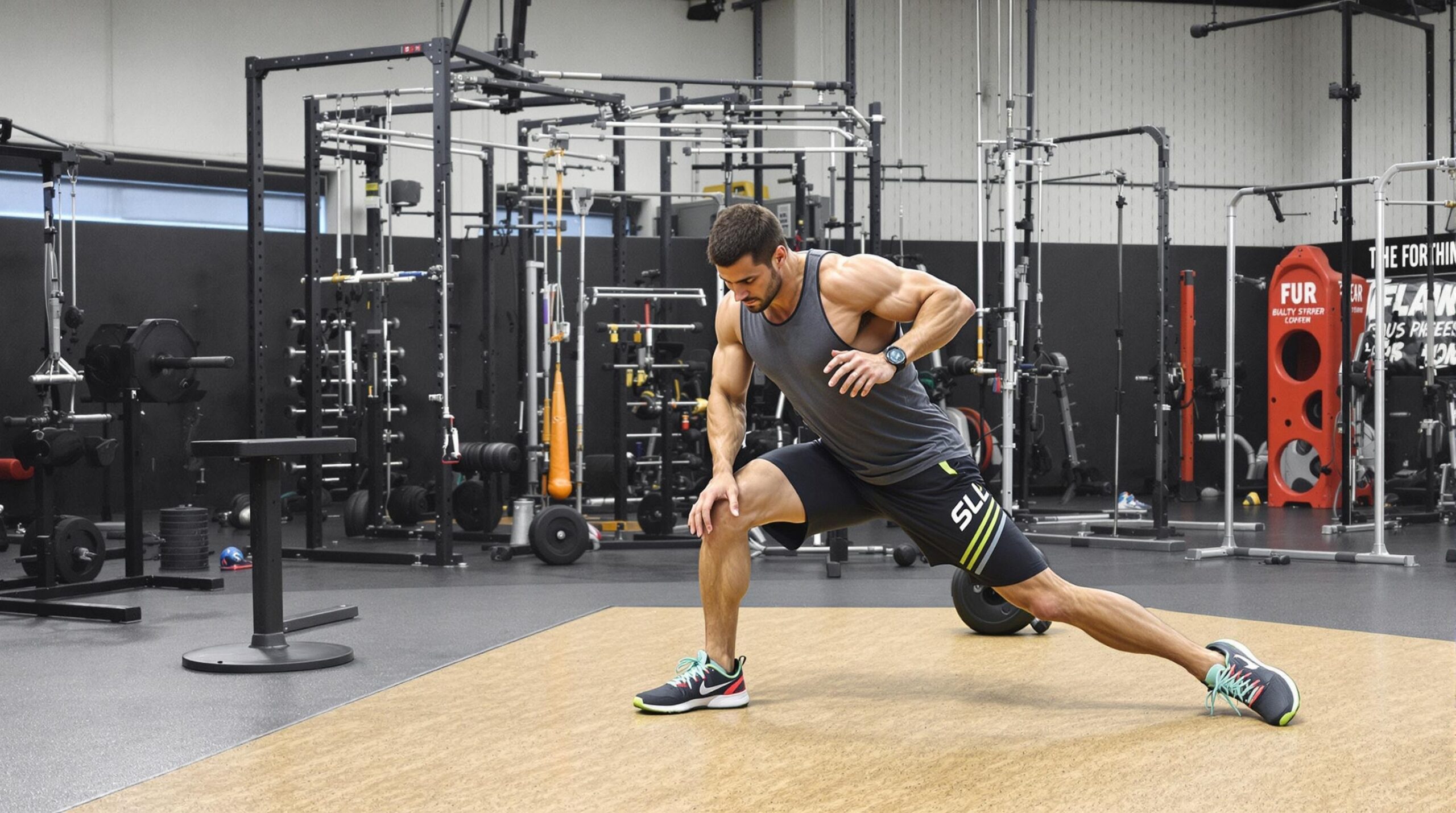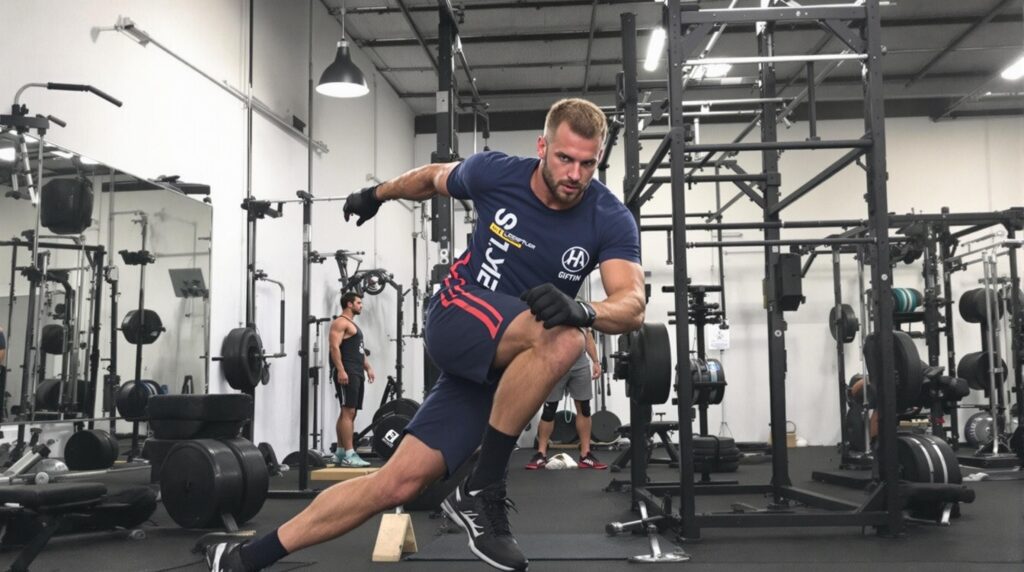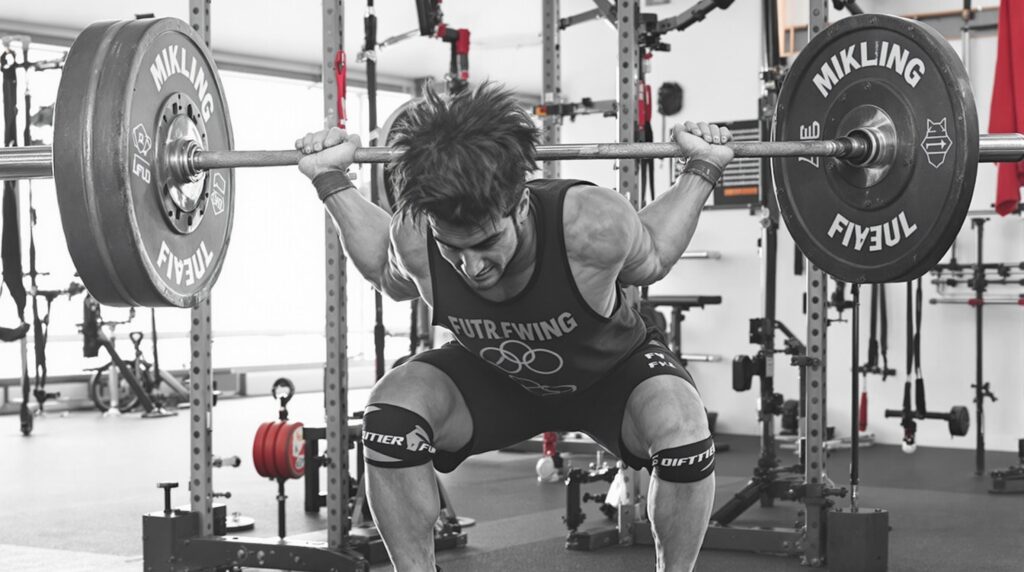Athletic performance optimization has entered a new era in 2025, combining cutting-edge technology with advanced scientific research to maximize human potential. At Athlete HQ, these breakthrough methods aren’t just transforming elite training—they’re creating a 15-22% boost in power output and changing how 84% of athletes approach their workouts.
Key Takeaways
- Olympic lifts and velocity-based training boost power output by 15-22% over 12-week programs
- AI-driven endurance platforms improve marathon times by 4-7% through personalized adaptations
- Strategic carbohydrate periodization requires 6-10g/kg/day for female athletes during intensive training
- Dynamic warm-ups and proper recovery techniques reduce injury risk by up to 33%
- Modern wearable technology prevents overtraining in 68% of athletes through precise monitoring
The Future of Athletic Excellence: 2025 Breakthrough Methods
The intersection of technology and sports science has revolutionized athletic training in 2025. Performance optimization has reached unprecedented levels with integrated training systems collecting and analyzing data points that were previously unimaginable. The statistics speak for themselves: Olympic lifts deliver 15-22% improvements in power output, while 84% of serious athletes now prefer AI-coached workouts for their flexibility and precision.
These innovations aren’t limited to professional sports. The technology that once served only Olympic athletes has filtered down to everyday fitness enthusiasts, creating a new standard for training efficiency. This democratization of advanced training methods has raised performance benchmarks across all athletic disciplines, from weekend warriors to elite competitors.

Advanced Strength Training Protocols for Maximum Power
The foundation of athletic performance still rests on solid strength development, but the methods have evolved significantly. Olympic lifts—power cleans, snatches, and jerks—remain the gold standard for developing explosive power. According to the USA Weightlifting organization, these movements improve power output by 15-22% over 12-week training programs.
The classic 5×5 strength programs have proven their worth with impressive strength gains. When paired with systematic progressive overload of 2.5-5 pounds weekly, these programs increase squat 1RM by 20-30% in just 8 weeks. Record holders in weightlifting consistently utilize this approach to build their foundational strength.
The real game-changer in 2025 is velocity-based training (VBT). Tools like Vitruve now adjust loads in real-time based on bar speed, optimizing each rep for either power or strength development. This technology accounts for daily fluctuations in performance that traditional percentage-based programs miss entirely.
For injury prevention, the statistics are compelling. Athletes using Athlete Monitoring Systems report 25% fewer overuse injuries, according to Catapult data. These systems track force-velocity curves, barbell speed metrics, and recovery status to prevent harmful training decisions.
Endurance Revolution: AI and VR Training Innovations
The endurance training landscape has been completely transformed by artificial intelligence. Platforms like Humango create hyper-personalized training plans that adapt in real-time to sleep quality, heart rate variability, and previous workout performance. These AI coaches have been shown to improve marathon times by 4-7% through their continuous adjustments.
Virtual reality has entered the training arena with remarkable results. VR simulations now boost strategic decision-making under fatigue, with cyclists showing 12% faster lap times when trained in fatigue-state VR scenarios. For motorsport athletes, the benefits are even more pronounced—15% faster reaction times compared to traditional methods.
The physiological benefits of properly structured endurance training are substantial:
- Low-intensity steady-state cardio increases mitochondrial density by 18% over 6 weeks (Gatorade Sports Science Institute)
- Strength-endurance protocols improve time-to-exhaustion by 35% after 12 weeks
- Interval training improves lactate threshold by up to 11% in well-trained athletes
These adaptations are crucial for glycogen preservation and fatigue resistance during long-duration athletic events. The training methods of CrossFit champions often incorporate these endurance protocols alongside strength work for comprehensive fitness development.
Strategic Nutrition Planning for Elite Performance
Nutrition strategies have become increasingly personalized, with carbohydrate periodization leading the way. Female athletes require 6-10 g/kg/day during heavy training phases, according to the 2025 Gatorade Performance Partner guidelines. This approach ensures adequate glycogen storage without unnecessary weight gain during lighter training periods.
Plant-based proteins have closed the gap with animal sources. Modern formulations now achieve 90% leucine bioavailability, matching whey protein’s muscle synthesis rates. This has opened new options for athletes with dietary restrictions or environmental concerns.
Hydration science has advanced beyond simple water replacement. New electrolyte gels containing 500-700 mg sodium per liter have been shown to reduce cramp incidence by 40% in ultramarathoners. These formulations better match sweat composition and maintain plasma volume during extended efforts.
Additional nutritional breakthroughs include:
- Regular bean consumption (3x weekly) increases iron levels by 12% (2020-2025 Dietary Guidelines)
- Turmeric-curcumin supplements reduce post-training inflammation markers by 27% (Arjuna Natural)
- Fiber modulation techniques prevent GI distress during competition while maintaining gut health
These nutrition timing strategies significantly impact recovery and adaptation rates when properly synchronized with training stimuli.
Recovery Science: Optimizing Healing and Preventing Injury
Recovery has earned its place as a training pillar rather than an afterthought. Dynamic warm-ups that include bounds, lunges, and mobility work lower ACL injury risk by 33% in team-sport athletes, according to Sheddon Physio Clinic research.
Sleep has emerged as the most powerful recovery tool available. Athletes averaging 8-9 hours nightly experience 21% faster muscle glycogen replenishment compared to those getting 6-7 hours. This enhanced recovery capacity allows for greater training density without overtraining.
Self-myofascial release techniques continue to prove their worth. Regular foam rolling improves range of motion by 14% and reduces delayed-onset muscle soreness intensity when performed post-training. For athletes requiring more targeted tissue work, tools like percussion massagers provide deeper penetration with similar benefits.
Special considerations for female athletes have gained recognition. High fiber intake (>35g/day) correlates with 18% higher rates of menstrual dysfunction in female endurance athletes, highlighting the need for individualized nutrition approaches based on sex-specific physiology.
Recovery modalities now include more sophisticated options. When comparing cold-water immersion versus normobaric hypoxia treatments, both reduce creatine kinase levels by 22%, but hypoxia better preserves power output for subsequent training sessions.
Wearable Tech and Performance Tracking in 2025
The wearable technology revolution has transformed data collection and interpretation. Catapult Vector S7 vests now provide 200Hz inertial movement data, detecting subtle gait asymmetries that correlate with future injury risks. These systems allow coaches to track biomechanical load and make evidence-based adjustments to training programs.
Recovery monitoring has become more sophisticated with the WHOOP 5.0’s strain calculator, which reduces overtraining in 68% of users by setting daily exertion caps based on recovery metrics. This prevents the downward spiral of accumulated fatigue that often leads to injury and performance declines.
Specific training modalities benefit from performance tracking:
- Loaded jumps improve vertical leap by 8-12% when integrated twice weekly (Enkiri Elite Fitness)
- Resisted sprints using sleds reduce 40-yard dash times by 0.3-0.5 seconds
- Bar path tracking improves technical efficiency in power cleans and other Olympic lifts
These metrics remove guesswork from training, allowing athletes to identify performance improvements that might otherwise go unnoticed and make data-driven adjustments to their programs.
The Gamification of Elite Training
Competition has always been a powerful motivator, but gamification has taken this to new heights. Hyrox races, which combine running with functional fitness elements, have seen explosive growth of 233% in participation during 2025. This trend has created demand for training programs that develop both endurance and strength-endurance capacities.
Virtual reality has entered the training space through platforms like Aviron, whose VR rowing apps increase adherence rates by 44% through competitive leaderboards and immersive environments. The competitive motivation keeps athletes engaged with otherwise monotonous endurance work.
The preference for AI-coached workouts has become clear. PureGym’s 2025 survey reveals that 84% of athletes prefer these flexible, adaptive programs over rigidly scheduled training. This shift mirrors the broader trend toward personalization in all aspects of athletic development.
Exergaming has gained legitimacy in professional circles, with virtual competitions now serving as supplemental training for many elite programs. The benefits extend beyond motivation, with measurable improvements in decision-making under pressure and tactical awareness.
Putting It All Together: Periodization for Year-Round Excellence
Effective periodization integrates all the elements discussed above into a coherent annual plan. Training cycles must balance progressive overload with adequate recovery while accounting for competition schedules and individual recovery capacities.
Modern periodization models have evolved beyond simple linear progression. Block periodization with concentrated loading phases followed by transmission and realization blocks has proven effective for developing multiple qualities simultaneously without interference effect.
The critical components of effective periodization include:
- Strategic fluctuation of volume and intensity across mesocycles
- Synchronized nutrition strategies that support training demands
- Targeted recovery protocols during high-intensity blocks
- Performance testing at key intervals to verify adaptation
The final piece is performance peaking, which requires carefully timed reductions in volume while maintaining intensity to achieve supercompensation for competition. This tapering process typically spans 1-3 weeks depending on the athlete and sport requirements.
By integrating these advanced approaches to strength, endurance, nutrition, recovery, and technology, the modern athlete



